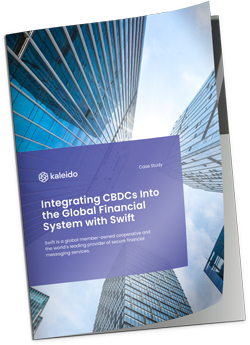

Ava Labs and Kaleido aim to equip businesses with the resources for asset tokenization. The Avalanche network, which is compatible with the Ethereum Virtual Machine (EVM), prioritizes fast transactions, scalability, and minimal fees. In 2022, they introduced Avalanche Subnets, enabling the design of specialized blockchains for distinct applications. These Subnets interact smoothly with the larger Avalanche ecosystem, offering the advantages of a public blockchain while allowing security and access controls usually seen only in private blockchains.
Avalanche aims to redefine the blockchain landscape by offering a fast and scalable platform for decentralized apps and digital assets. Its architecture employs a unique consensus mechanism that delivers quick transactions and low latencies. But what are the different Avalanche chains and why do they exist?
Avalanche comprises three core blockchains: Exchange Chain (X-Chain), Platform Chain (P-Chain), and Contract Chain (C-Chain). Each serves a specific purpose, as explained below. There is also a test chain, Fuji, which you can use with the Kaleido platform to test your use case.
The X-Chain is optimized for asset trading. It offers quick and secure transactions, making it ideal for real-time trading scenarios. Users can benefit from multi-signature wallets for added security, and a built-in programming language for customized trading logic.
The P-Chain focuses on application development and asset management. It's engineered to run decentralized apps efficiently, offering the same speed and latency benefits as the X-Chain. A dedicated smart contract language allows for tailored app development.
The C-Chain specializes in smart contracts. It provides a secure framework for contract creation and execution. Just like the other chains, it supports fast transactions and low latencies, and includes a specialized language for custom contract development.

In addition to these production chains, Avalanche also has a testnet called Fuji. In our how to tokenize an asset tutorial, we used the testnet to create a digital asset on the Kaleido Asset Platform using our NFT services. Using the testnet on Kaleido is a great way to start experimenting with Avalanche on the Kaleido platform.
Avalanche's three blockchains—X-Chain, P-Chain, and C-Chain—are designed to interact seamlessly to provide a comprehensive ecosystem for various blockchain applications.
The Exchange Chain (X-Chain) is responsible for creating and trading Avalanche's native tokens and digital assets. The Platform Chain (P-Chain) manages the Avalanche network itself, including validators, and coordinates the creation of new subnets. The Contract Chain (C-Chain) enables smart contracts and decentralized applications (DApps), operating with Ethereum compatibility.
These chains are interconnected, allowing assets to move between them through a process called "atomic swaps," enabling a fluid and versatile environment where users can issue assets, stake on network validators, and deploy complex DApps with ease.
Avalanche Subnets offer several advantages over traditional blockchain networks by allowing entities to create their own customizable blockchains with specific rules and parameters.
This customization enables tailored solutions that can meet unique industry requirements or governance models, providing flexibility not typically available in more rigid, one-size-fits-all blockchain networks.
Subnets can have their own consensus mechanisms, tokenomics, and membership controls, offering scalability by distributing the workload across multiple specialized chains.
This approach reduces congestion on the main network, leading to faster transactions and lower fees, while still maintaining high security and interoperability with the broader Avalanche ecosystem.
Ethereum applications can migrate to Avalanche's C-Chain thanks to its Ethereum Virtual Machine (EVM) compatibility. This compatibility allows developers to deploy existing Ethereum smart contracts and DApps on the C-Chain with minimal modifications.
The benefits of migrating to the C-Chain include higher transaction throughput, reduced transaction confirmation times, and lower gas fees compared to Ethereum's mainnet.
Additionally, the C-Chain's architecture supports more scalable and efficient consensus mechanisms, providing a robust platform for applications requiring high performance and reliability.
This makes Avalanche an attractive option for developers looking to enhance their applications' scalability and user experience without departing from the familiar Ethereum development environment.
Overall, Avalanche stands out as a highly versatile and scalable blockchain platform. Its three specialized chains—X-Chain, P-Chain, and C-Chain—offer a comprehensive suite of features for asset trading, application development, and contract execution.
Kaleido is proud to support the Avalanche Network and Avalanche Subnets, providing enterprises, gaming companies, institutions, and governments with turnkey solutions to accelerate development with these technologies. If you want to put Avalanche to work for you, schedule a talk with one of our solution architects.
Kaleido makes it simple to get started. Pick your protocol and get going with a free trial.
Start A Free TrialKaleido makes it simple to get started. Pick your protocol and get going with a free trial.
Start A Free Trial


Kaleido makes it simple to get started. Pick your protocol and get going with a free trial.
Start A Free TrialKaleido makes it simple to get started. Pick your protocol and get going with a free trial.
Start A Free Trial
Your guide to everything from asset tokenization to zero knowledge proofs
Download Now
Learn how Swift, the world’s leading provider of secure financial messaging services, utilizes Kaleido in its CBDC Sandbox project.
Download Now

